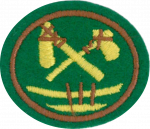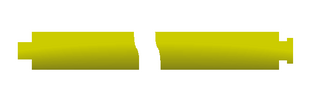Difference between revisions of "AY Honors/Canoe Building/Answer Key/es"
(Created page with "{{clear}}") |
(Created page with "</noinclude> <!-- 7. Ayudar en la elaboración de remos, asientos, postes y accesorios de la canoa. -->") |
||
| Line 68: | Line 68: | ||
{{ansreq|page={{#titleparts:{{PAGENAME}}|2|1}}|num=7}} | {{ansreq|page={{#titleparts:{{PAGENAME}}|2|1}}|num=7}} | ||
<noinclude></noinclude> | <noinclude></noinclude> | ||
| − | <!-- 7. | + | <!-- 7. Ayudar en la elaboración de remos, asientos, postes y accesorios de la canoa. --> |
| − | |||
| − | |||
When making a paddle, the craftsman will be trading strength for weight, and this is a delicate balance to strike. If the paddle is too heavy, it will easily and unnecessarily tire its user. But if it is too light, it will lose strength and may break when stressed. Usually a paddle is stressed at the most inopportune times - they experience very little stress in calm, flat water when it wouldn't be much of a problem if it broke. | When making a paddle, the craftsman will be trading strength for weight, and this is a delicate balance to strike. If the paddle is too heavy, it will easily and unnecessarily tire its user. But if it is too light, it will lose strength and may break when stressed. Usually a paddle is stressed at the most inopportune times - they experience very little stress in calm, flat water when it wouldn't be much of a problem if it broke. | ||
Revision as of 16:48, 17 January 2021
| Construcción de canoas | ||
|---|---|---|
| Asociación General
|
Destreza: 3 Año de introducción: Desconocido |
|
Requisitos
1
2
3
4
5
6
7
When making a paddle, the craftsman will be trading strength for weight, and this is a delicate balance to strike. If the paddle is too heavy, it will easily and unnecessarily tire its user. But if it is too light, it will lose strength and may break when stressed. Usually a paddle is stressed at the most inopportune times - they experience very little stress in calm, flat water when it wouldn't be much of a problem if it broke.
Seats
The seats are made from wood which is shaped and fitted over the gunwales. They are shaped such that the bottom of the seat is lower than the gunwales. The seat will lift off the gunwales. When the canoe is dragged up onto the beach, the paddler will take both the paddle and the seat into his home.
Poles
The poles, like the paddles trade weight for strength. They are typically the same (or nearly the same) diameter from top to bottom. The length depends on the depth of the water in which they are used. Poles are used from a standing position, and the length reflects this.
8
Decking
Not all dugouts were outfitted with decks, but when present, decking is placed at both ends of the canoe to keep breaking waves from filling the boat. They help the boat to shed water. Decks are flat pieces of wood connected to the edges of the canoe and can be lashed in place by boring holes in both the hull (near the upper edge) and the deck. Once the deck has been lashed in place, the holes are sealed with pitch.
Outrigger
Outriggers of New Zealand consist of three parts: a pair of booms, connecting pegs, and a float. One boom is lashed to the canoe near the bow, and the other is lashed near the stern. Holes are bored into the hull directly below the booms so that cordage can be passed through them when lashing.
Each boom receives long pegs which are then connected to the float. The length of the pegs is adjusted so that the float will be positioned at the surface of the water. The pegs are lashed both to the booms and to the float. When lashing the pegs to the floats, a hole is bored through the float and the cordage is passed through it. This prevents the lashing from being positioned at the bottom of the float where it would be subjected to extreme wear and tear as the canoe is dragged across rocks and up onto beaches.
The float is typically pointed at the bow end and square at the stern.
Mast and Sail
If a canoe is outfitted with a mast and sail, it should also have outriggers. Otherwise, it can easily be toppled by the wind.
The mast is roughly 4 meters![]() long and tapers from 28 mm
long and tapers from 28 mm![]() at the top to 45 mm
at the top to 45 mm![]() at the bottom. It is inserted into a hole in the seat, and then into a socket cut into the bottom of the boat to receive it.
at the bottom. It is inserted into a hole in the seat, and then into a socket cut into the bottom of the boat to receive it.
A few inches above the seat it is fastened to a boom. The boom is the same length and diameter as the mast. Shoulders are cut near both ends, with the mast-end having a deeper shoulder (see illustration).
The boom is simply tied to the mast, and the sail is tied to both the mast and the boom. The sail itself is triangular.
See http://www.mit.edu/people/robot/lepalepa/index.html for detailed drawings.
9
Choose a soft wood and shape the model as closely as you can to match your canoe. People will often carve a scale model before beginning to shape the log. The model can then be used as a reference.
Reference
- http://www.greatdreams.com/canoe2.htm
- http://www.nzetc.org/tm/scholarly/tei-BucSamo-t1-body1-d7-d1-d4.html
- http://www.willghormley-maker.com/MakinADugoutCanoe.html
- Categoría: Tiene imagen de insignia
- Adventist Youth Honors Answer Book/Honors/es
- Adventist Youth Honors Answer Book/es
- Adventist Youth Honors Answer Book/Skill Level 3/es
- Categoría: Libro de respuestas de especialidades JA/Especialidades introducidas en Desconocido
- Adventist Youth Honors Answer Book/General Conference/es
- Adventist Youth Honors Answer Book/Recreation/es
- Adventist Youth Honors Answer Book/Recreation/Primary/es
- Adventist Youth Honors Answer Book/Stage 0/es
- Adventist Youth Honors Answer Book


